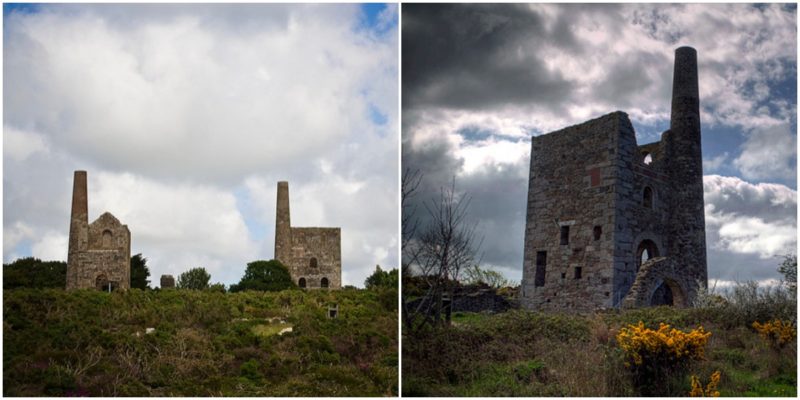The county of Cornwall, the extreme southwestern peninsular of England, is known for its dramatic coastline, varied landscape, and the haunting derelict buildings of a once prosperous tin and copper mining industry.
Wheal Peevor mine, situated just outside the town of Redruth, has not been worked for around 100 years. The 12.5 acre site was left to slowly decay and the area was too hazardous for public access until a three-year-long reclamation project, which started in 2005. The 12 mine shafts and surroundings were made safe, and the remaining buildings preserved.
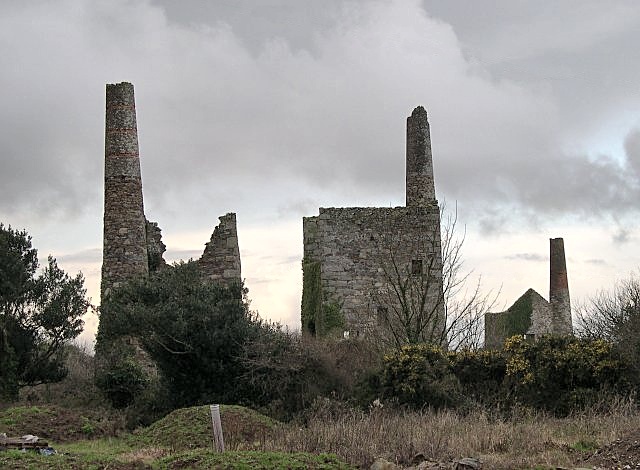
In comparison with the other historic mines in the region it is relativity small, but Wheal Peevor was very rich in minerals. According to Visit Redruth, Wheal Peevor “is one of the most internationally significant mining sites” in the region. The site today gives a unique window into Cornwall’s mining past.
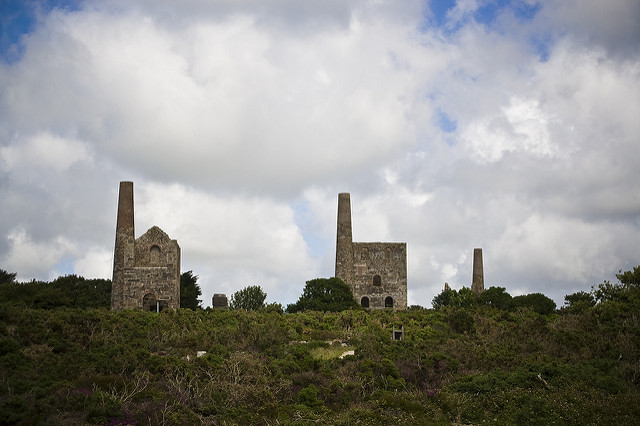
Visitors are able to explore inside the the three Grade II listed engine houses: the pumping engine house, which worked 24/7 pumping water from the shafts, the deepest of which went down to 1660 feet; the winding engine house, used to hoist the ore; and a stamps engine house, built in 1876, where the ore was crushed.
Near the stamps engine house is a series of large ring-shaped pits, or buddles. These used water to separate the light waste substances from the heavier particles of tin.
Parts of settling tanks and ore bins, as well the remains of two Brunton Calciners (for the extraction of arsenic by heating the ore) connected with flues to an arsenic chimney can be also seen.
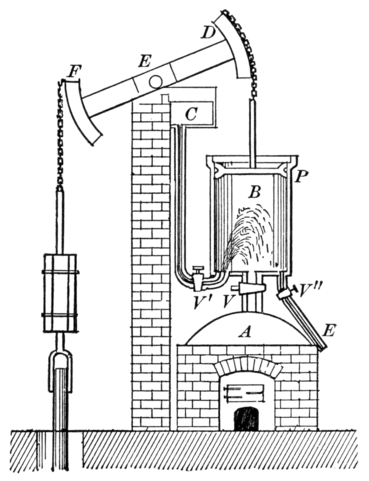
The first mining activities started in the mid-1700s. At that time, the property was owned by the St. Aubyn family. The site was originally worked for copper ore at shallow depths, but the outputs from this early period are not recorded.
The mine was very wet and three Newcomen atmospheric engines were employed for pumping the water out. There are few traces left from the first phase of the mine.
Copper prices plunged at the end of the 18th century and mining activities ground to a halt. Development of the mine did not stop there, however, even though it was paused for several decades.
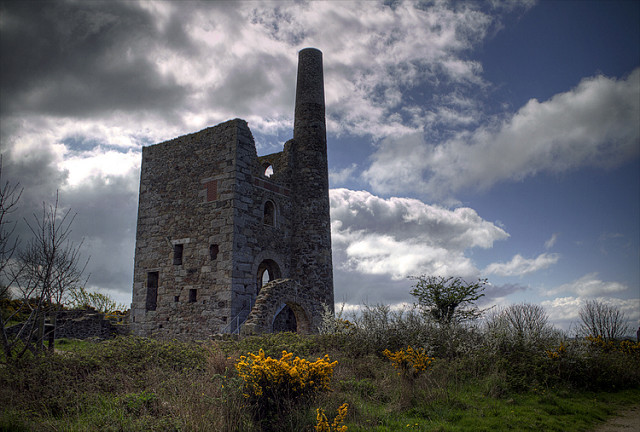
The rebirth of the mine happened in 1872 after rich veins of high quality tin ore were discovered, which assayed at 4 percent — at least twice as profitable as ore from most other Cornish mines, which yielded 1-2 percent tin.
It was opened again as part of the Great North Downs Mine, but was worked as a separate mine site known as Wheal Peevor. Wheal is Cornish word for mine but Peevor is of unknown origin, though it could be the name of one of the investors.
This fruitful period when the mine was highly profitable lasted from 1872 until 1888. Britain Express reports that “over that time it extracted some 3,280 tons of black tin, 5 tons of copper ore, 7 tons of pyrite, and 12 tons of arsenopyrite.”
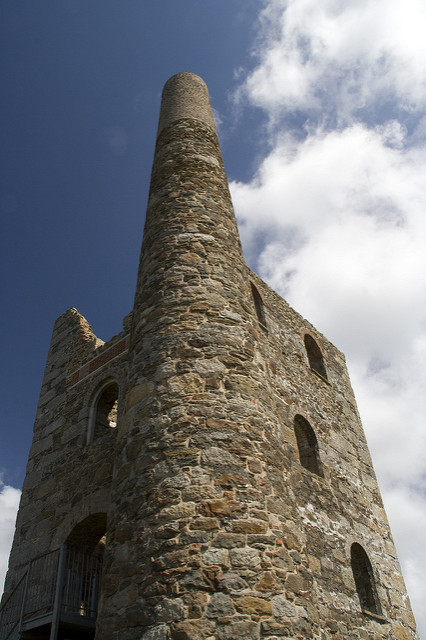
Most of the structures that can be seen today were built in this period. The 60 inch cylinder steam driven Mitchells Pumping Engine worked all day and night in order to keep the mine from flooding. Later, a 70-inch pumping cylinder was brought from the nearby Wheal Violet Seaton mine.
But, at the end of the 1870s, tin prices crashed when vast, easily exploited, deposits were discovered in Australia and the Far East. Wheal Peevor was suddenly no longer profitable and closed in 1889.
In its heyday there were 186 miners toiling underground and 135 workers, most of them children and women, at the surface.
The work was equally dangerous and difficult at the surface as in the underground, and it would have been deafeningly loud. Only 37 employees remained just before the mine closed.
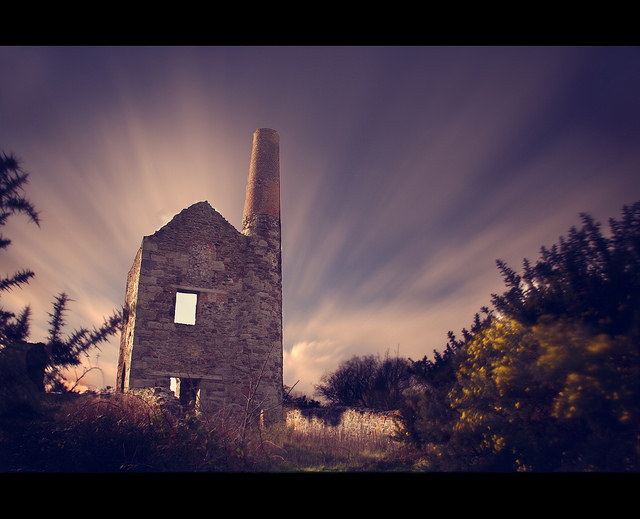
In 1911 the mine was opened again, but this time only parts of it were put in production for extracting tin ore. The primary mineral for extraction in this period was wolframite (tungsten ore), used for the hardening of steel to be made into artillery shells.
Production stopped and the mine was closed again at the end of WWI.
Many of the structures used during this period were enlarged in order to house larger, more modern equipment. An attempt to reopen the mine was made in 1938, but without success.
The site was prospected once more during the 1950s, and again no further steps were taken. After that, the mine site was left abandoned.
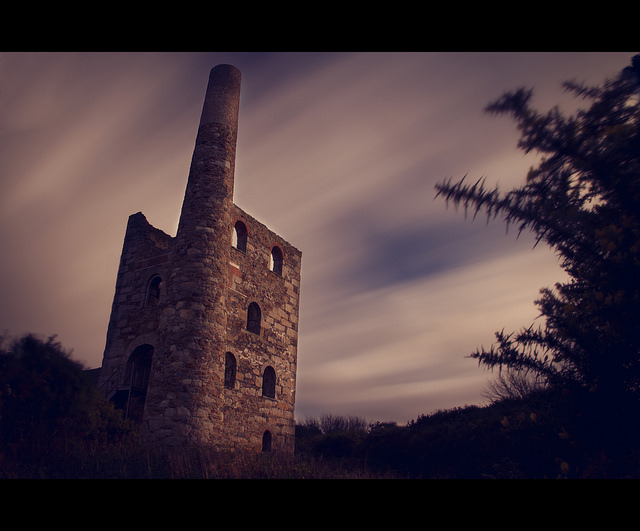
Finally, in 2003 a government grant was given to the Wheal Peevor Project to reclaim the scarred land as a recreation area. The preservation process started in 2005.
Overgrown vegetation was removed and treacherous mine workings were carefully explored and made safe. The surviving structures were stabilized and partially reconstructed.
A network of trails and informative boards were added around the site. The trails are part of the Mineral Tramways Project that links many of the industrial historic sites around Camborne and Redruth. There are also paths around the former mine buildings and panels that tell in detail the history of the mine.
Some of the engine houses have viewing platforms that allow the interior of these precious buildings to be seen. Wheal Peevor Mine Site and Multi-Use Trail officially opened for the public in 2008.
